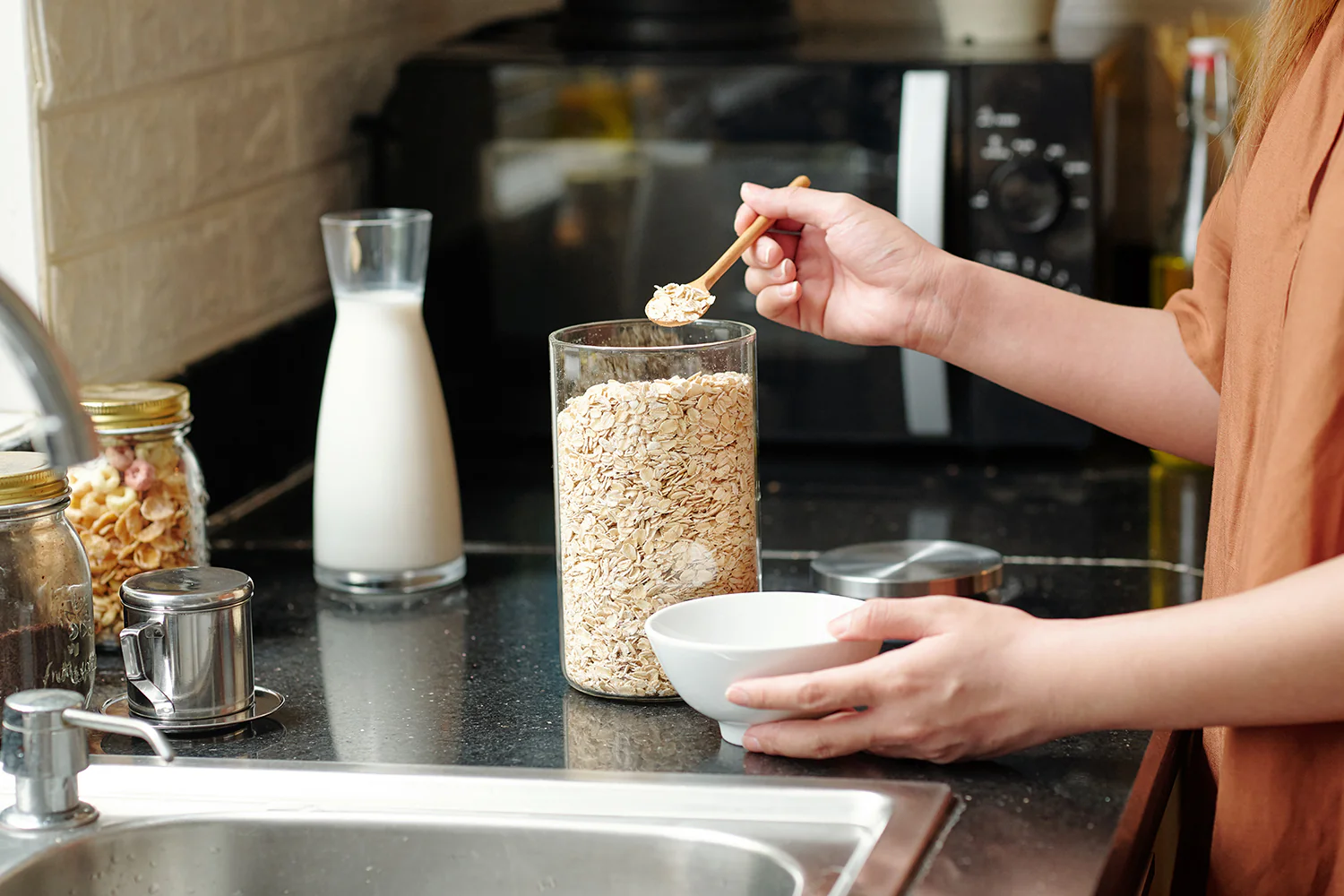
Most people believe that eating healthy is all about food.
While the food you add does play an essential role in your nutrition, most people forget that how you prepare it or its origin also plays an equally important role in your health.
Depending on the type of processing a food receives, it can go from healthy to unhealthy food. So, you might be doing the opposite instead of nurturing your body.
In this article, I will explore the top 5 foods you are eating wrong. This means that you need to be careful with the processing it receives of the origin of the food.
Foods You Are Eating Wrong
1. Oats

Oats are one of the most common grains people have for breakfast. They are high in carbs, fiber, protein, and nutrients. However, depending on the processing it receives, it can affect your sugar levels.
Fiber plays an essential role in your body. It helps increase your fullness levels, reduce your cholesterol levels, and helps you have more stable sugar levels. The more fiber a food has, the less impact it will have on your glucose (sugar) levels.
The problem with oats relies on the processing it receives. In 100 g of instant oats, you can get around 6 to 8 grams of fiber, while in steel-cut oats, you get 13 to 15 grams of fiber. This has a massive impact on your sugar levels. With a lower fiber content, instant oats raise sugar levels more than steel-cut oats.
Another common problem with oats relies on preparation. Nowadays, we find instant oats high in additives and sugar, making them an unhealthy option.
My favorite way to prepare them is to make them in water or plant-based milk and add some protein powder, cinnamon, and vanilla powder. I guarantee you will get a lot of flavor without the added sugar or additives in commercial oats.
If you are not a big fan of oats, you can have other grains like quinoa, brown rice, and legumes that can offer similar properties.
Also Read: 9 Superfoods to Eat After 50
2. Peanuts butter

Another typical food you might be eating wrong is peanut butter. While most people love this tasty treat, how you get it is essential to how healthy it is.
Peanuts are an excellent food to add. They are high in healthy fats, which are suitable for your heart health, and they are also high in protein. For those that don't want to add too many carbs to their diets, the good news is that peanuts are very low in carbs (keto-friendly option).
However, the origin of the peanuts and their processing are some of the things you need to consider when buying peanut butter.
The first thing you need to consider is the origin of the product. Make sure to buy organic peanuts to avoid adding unnecessary chemicals to your diet.
The second thing you need to be careful about when consuming peanut butter is the processing it receives. Choose unprocessed peanut butter, meaning they are the most natural way possible. Check that the ingredient list contains no other ingredients besides peanuts and/or salt.
In most cases, peanut butter gets added sugars and corn syrup to increase palatability. This decreases the quality of the peanut butter.
Another common ingredient that the food industry adds is partially hydrogenated fats. While this can make your peanut butter creamier, they are also a source of trans fats, increasing your heart disease risk.
I often recommend doing your peanut butter. While it sounds complicated, I can assure you it is straightforward. Get organic peanuts and place them in the oven to help them release some of their natural oils. Add the ingredients of your choice (like natural cocoa powder or coconut) to enhance the flavor. You then place them on a food processor until you get a creamy consistency.
3. Flax seeds

Flax seeds are an excellent addition to your diet. They are high in omega-3 fatty acids, which can help reduce inflammation in your diet.
However, one of the most common mistakes people make is buying grounded flax seeds.
When you ground flax seeds, the healthy fats you find in them get oxidized, meaning it loses their health properties.
The same applies to chia seeds and hemp seeds.
If you want to have ground flax seeds, ground them at home and minutes before you have them to prevent the healthy fats from losing their potency.
4. Fish

Fish can be a very healthy option for you to have. In most cases, they are a healthy protein option for you to consume. However, its mercury content and the way it's raised can affect how beneficial it is.
First, let's talk about mercury content.
Mercury is a constant concern when it comes to fish. Mercury poisoning can lead to health problems like tremors, memory problems, and headaches. When looking to add fish to your diet, choose those that are lower in mercury. The FDA created a table that can help you determine which ones are better for you to include.
Another thing you need to consider is how the fish is raised. Studies show that wild-caught fish can have 50% more omega-3 content than farmed-raised. Farmed fish tends to be higher in antibiotics with a poor quality of nutrients.
So, when choosing fish, opt for those lower in mercury and those you can get wild-caught.
Also Read: What Are The Well-Proven Benefits Of Omega-3 Supplements?
5. Dressings
Finally, the dressing you put into your salad might not be the best option.
Depending on the type of oils they use, it can cause more inflammation.
Dressing made with vegetable oils can be high in omega-6 fatty acids, which increases your inflammation levels. When choosing a sauce, opt for those made with avocado or extra virgin olive oil.
Another thing to consider is the amount of sugar it has. In most cases, fat-free products are highly processed and have high sugar content.
Read the nutrition label thoroughly to check the quality of the ingredients and the macronutrient content.
As I always say, ensure you can understand a food's ingredients. It should be like following a recipe, not a lab report.
